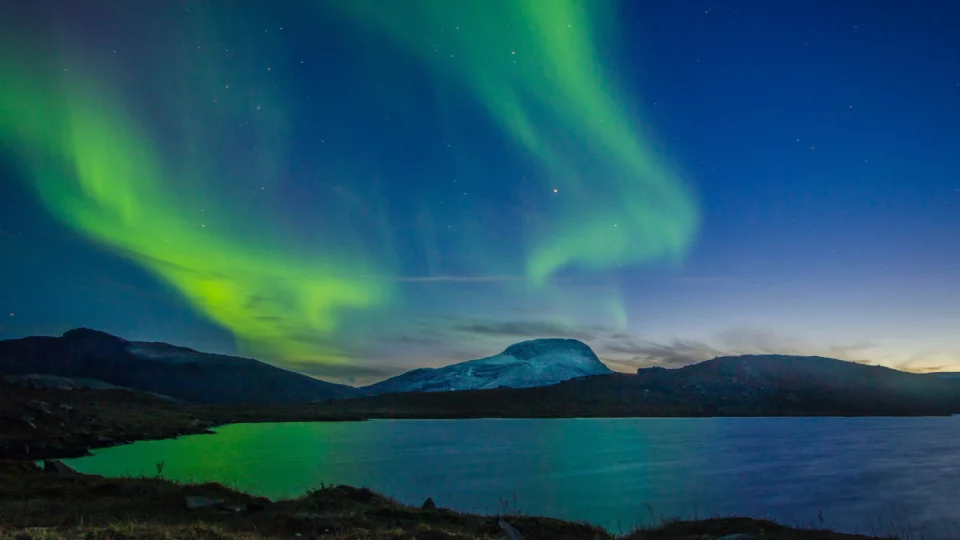The Northern Lights, or Aurora Borealis, are one of the most stunning natural phenomena on Earth. These mesmerizing lights, often seen dancing across the polar skies, captivate the imagination of people worldwide.
The year 2024 is expected to be particularly special for aurora enthusiasts, as September presents an enhanced opportunity to witness vibrant displays due to a unique combination of factors involving Earth’s tilt and solar activity.
Table of Contents
Understanding the Northern Lights: What Causes the Aurora Borealis?
The Northern Lights are caused by the interaction between charged particles from the sun, known as the solar wind, and the Earth’s magnetic field and atmosphere. When these particles collide with gases such as oxygen and nitrogen in the Earth’s atmosphere, they release energy in the form of light.
This process, known as ionization, creates the stunning displays of color that we associate with the aurora. The colors of the aurora vary depending on the type of gas involved and the altitude at which the collisions occur. Oxygen produces green and red auroras, while nitrogen is responsible for blue and purple hues.
The intensity and frequency of auroral displays are influenced by the sun’s activity, which follows an 11-year solar cycle. During periods of high solar activity, known as solar maximum, more charged particles are released from the sun, increasing the likelihood of auroras. Conversely, during solar minimum, auroras are less frequent and less vibrant.
As of 2024, we are approaching a period of heightened solar activity, which, combined with Earth’s axial tilt in September, sets the stage for an extraordinary aurora season.
The Role of Earth’s Tilt in the Aurora Season
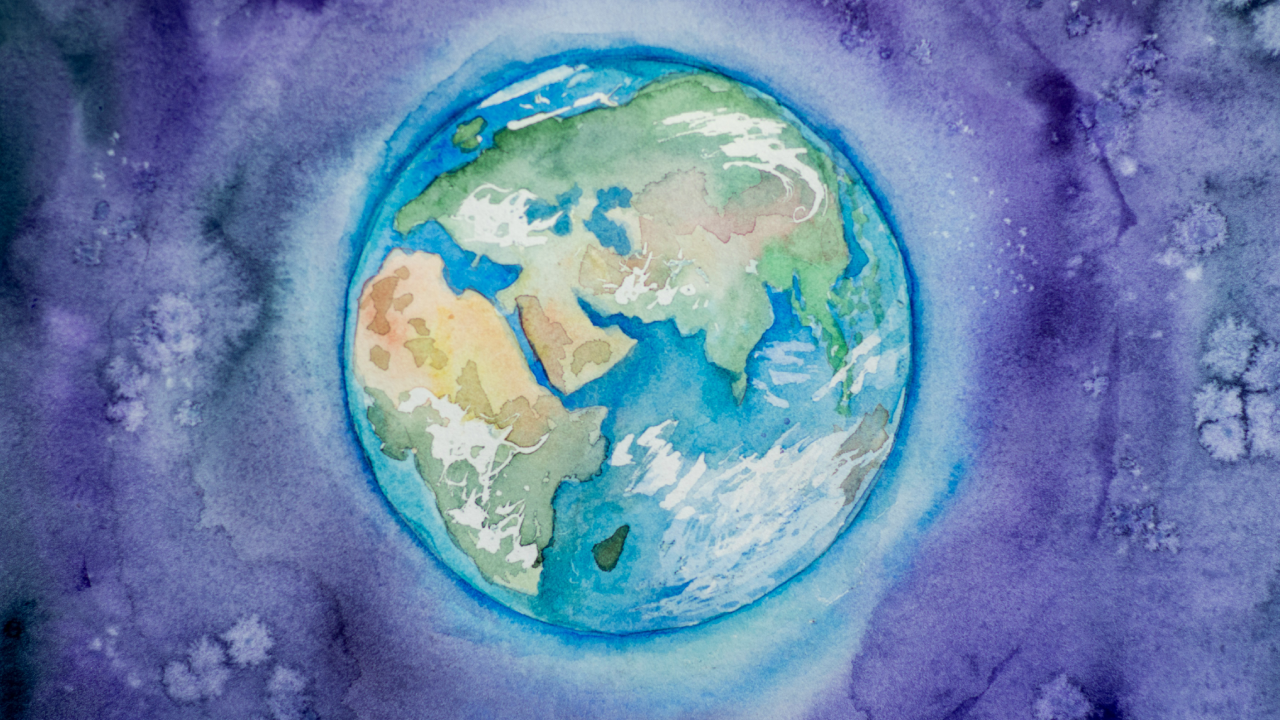
Earth’s axial tilt, or obliquity, plays a significant role in the visibility and intensity of the Northern Lights. The Earth is tilted at an angle of approximately 23.5 degrees relative to its orbit around the sun. This tilt affects the distribution of sunlight across the planet, resulting in the changing seasons. It also influences the positioning of the Earth’s magnetic poles, which are crucial for aurora formation.
In September, the Earth is positioned in such a way that the Northern Hemisphere begins to tilt away from the sun, marking the transition from summer to autumn. During this period, the polar regions experience longer nights, providing an extended window of darkness—essential for observing the aurora.
Additionally, the orientation of Earth’s magnetic field during this time of year is particularly favorable for interactions with the solar wind. This alignment enhances the chances of auroral displays, especially in regions close to the magnetic poles, such as Scandinavia, Canada, and Alaska.
See also: Get Ready for a Stunning Light Show: Northern Lights to Grace UK Skies Tonight!
September 2024: A Perfect Storm for Vibrant Auroras
The aurora season in September 2024 is expected to be exceptionally vibrant due to a combination of factors. First, we are approaching a peak in the solar cycle, leading to increased solar activity and more frequent solar storms. Solar storms are eruptions of charged particles from the sun that can significantly enhance auroral displays when they interact with the Earth’s magnetosphere.
A stronger solar wind increases the number of charged particles entering the Earth’s atmosphere, which in turn increases the intensity and color diversity of the Northern Lights.
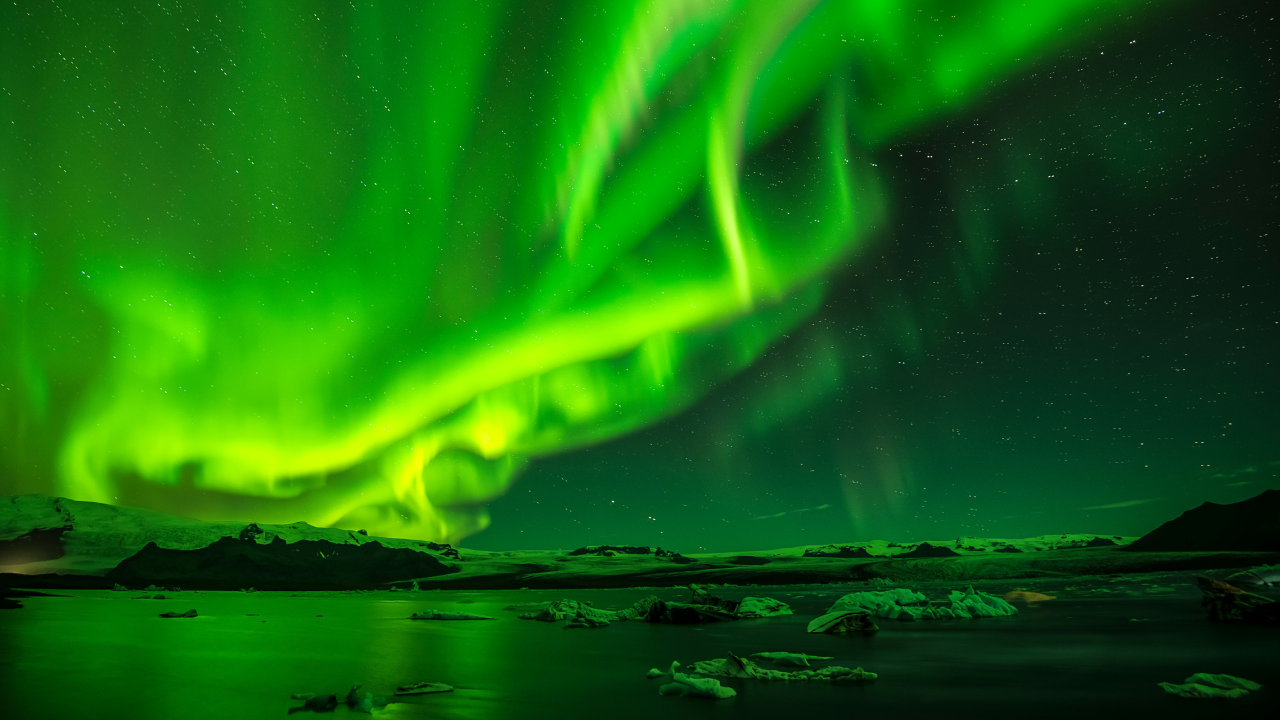
Second, the geomagnetic conditions around the equinoxes, particularly the autumnal equinox in September, are known to be favorable for aurora activity. This phenomenon, known as the “Russell-McPherron effect,” occurs because the tilt of the Earth’s axis and its magnetic field align in a way that maximizes the impact of the solar wind. This effect is most pronounced around the equinoxes, leading to more frequent and intense auroras during these periods.
In September 2024, these factors converge to create what could be one of the most spectacular aurora seasons in recent years. For aurora chasers, this presents a unique opportunity to witness some of the most vibrant displays of the Northern Lights, with the potential for multicolored auroras that stretch across the night sky.
Best Locations to Experience the Aurora Borealis in September 2024
For those looking to experience the Northern Lights in all their glory, location is key. The best places to see the aurora are typically within the “Auroral Oval,” a ring-shaped zone around the geomagnetic poles where auroral activity is most frequent.
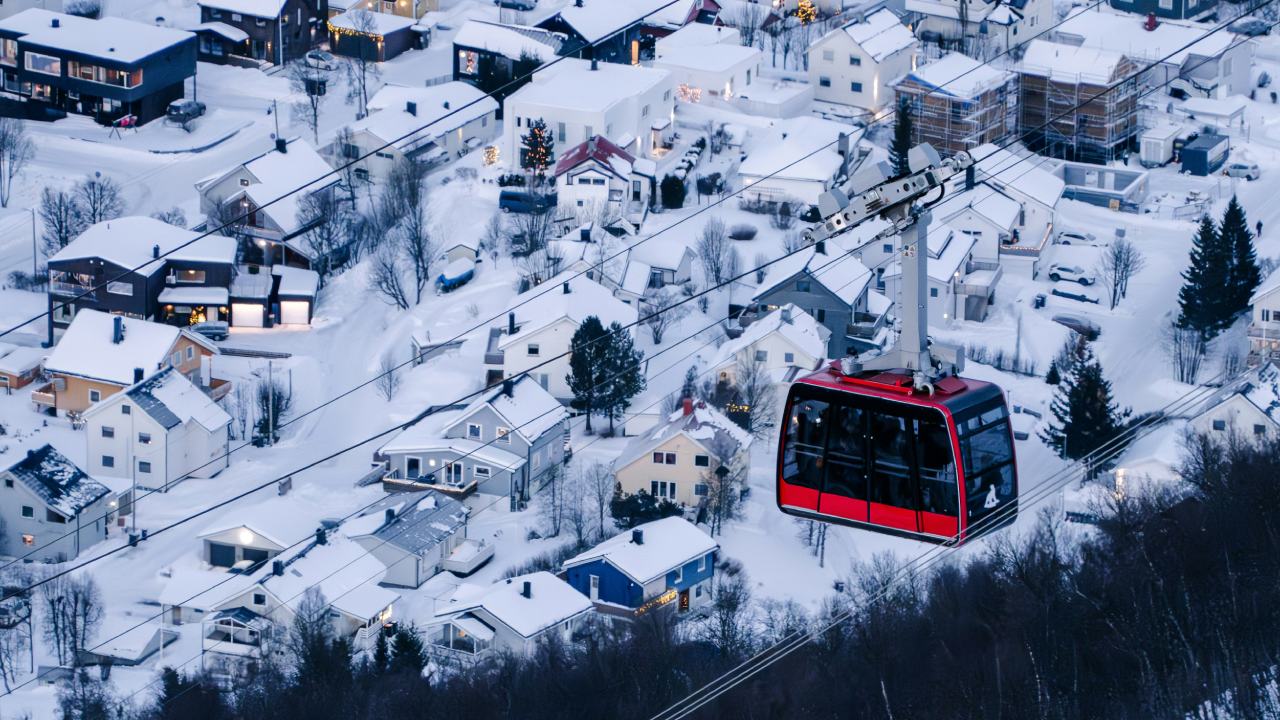
Here are some of the top locations to consider for witnessing the Northern Lights in September 2024:
- Tromsø, Norway. Known as the “Gateway to the Arctic,” Tromsø is one of the best places in the world to see the Northern Lights. Located well within the Auroral Oval, Tromsø offers excellent opportunities for aurora viewing, with a high probability of clear skies and minimal light pollution. The surrounding fjords and mountains provide a stunning backdrop for aurora photography.
- Reykjavik, Iceland. Iceland’s capital is another popular destination for aurora chasers. While Reykjavik itself can be quite bright, a short drive out of the city offers dark skies and excellent aurora viewing conditions. The combination of geothermal landscapes, waterfalls, and the Northern Lights makes Iceland a magical destination for travelers in September 2024.
- Yellowknife, Canada. Located in Canada’s Northwest Territories, Yellowknife is considered one of the best places in North America to see the Northern Lights. The city boasts clear skies and a high frequency of auroral displays, thanks to its location under the Auroral Oval. Yellowknife’s remote location and dedicated aurora tourism infrastructure make it a top choice for September 2024.
- Fairbanks, Alaska, USA. Fairbanks is another excellent location for viewing the Northern Lights in North America. Situated within the Auroral Oval, Fairbanks offers numerous guided tours and activities for aurora enthusiasts. The region’s cold, clear nights and low humidity provide ideal conditions for witnessing vibrant auroras.
- Abisko, Sweden. A lesser-known gem for aurora viewing, Abisko is located in Swedish Lapland and is renowned for its microclimate, which often results in clear skies when surrounding areas are cloudy. The combination of a dark, remote location and favorable weather conditions makes Abisko a top choice for September 2024.
Tips for Photographing the Northern Lights
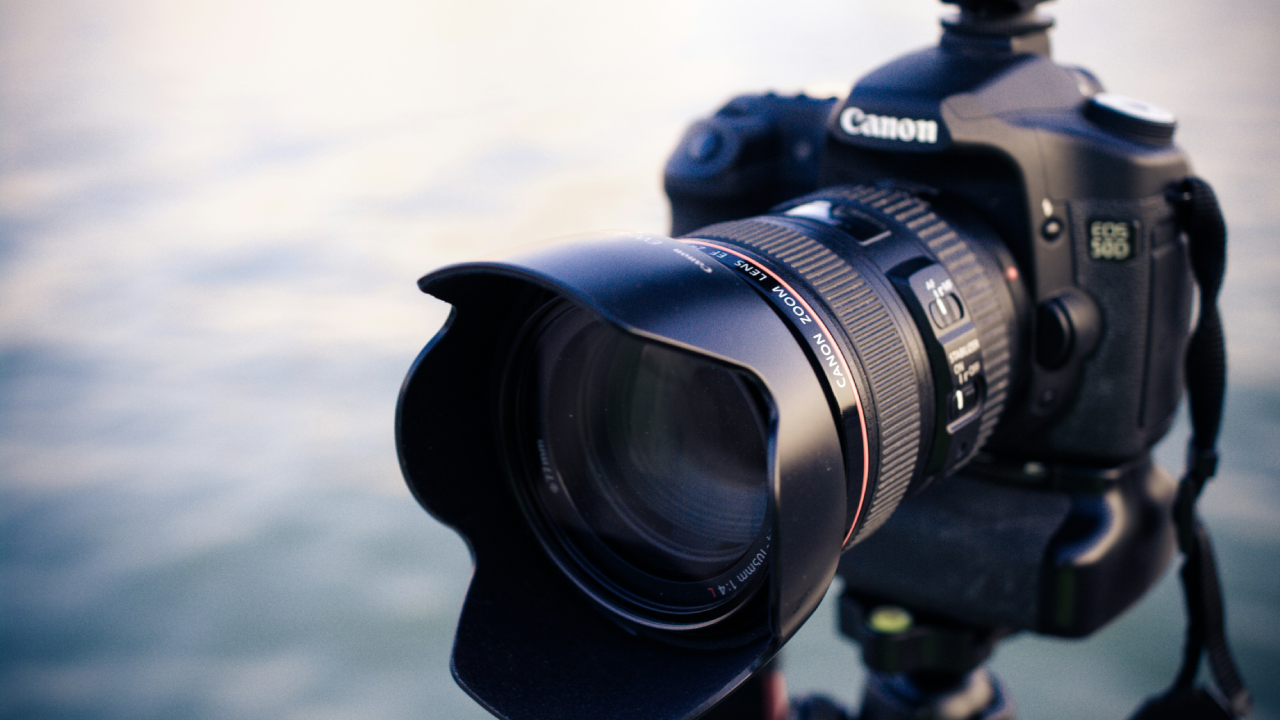
Photographing the Northern Lights can be a challenging yet rewarding experience. Here are some essential tips to help you capture the beauty of the aurora:
- Use a Tripod. Stability is key when photographing the Northern Lights. A sturdy tripod will help you take long-exposure shots without any camera shake, ensuring sharp and clear images.
- Manual Settings. Set your camera to manual mode to have full control over exposure settings. A low aperture (f/2.8 or lower), a high ISO (between 800 and 3200), and a long exposure (between 5 to 30 seconds) are typically ideal for capturing the aurora.
- Focus on Infinity. The Northern Lights occur far above the Earth’s surface, so it’s essential to set your camera lens to focus at infinity. This ensures that the stars and auroras are sharp in your images.
- Experiment with Composition. Include foreground elements like trees, mountains, or water bodies to add depth and context to your aurora photos. Experiment with different compositions to create dynamic and visually appealing images.
- Stay Warm and Be Patient. Aurora photography can involve long hours in cold conditions. Dress warmly and be prepared to wait for the perfect moment when the lights are at their most vibrant.
The Science of Predicting Auroras: Tools and Resources
Predicting auroras is a complex science that involves monitoring solar activity and understanding how it interacts with the Earth’s magnetic field. Fortunately, several tools and resources are available for aurora enthusiasts to increase their chances of witnessing the Northern Lights:
- Space Weather Prediction Center (SWPC). Operated by NOAA, the SWPC provides real-time information on solar activity, geomagnetic storms, and aurora forecasts. The center’s 3-day geomagnetic forecast is particularly useful for planning aurora trips.
- Aurora Alerts and Apps. Several smartphone apps, such as “My Aurora Forecast” and “Aurora Alerts,” provide real-time notifications and forecasts for auroral activity based on your location. These apps use data from space weather agencies to predict the best times and locations to see the Northern Lights.
- Aurora Service Websites. Websites like “Aurora Service Europe” and “AuroraWatch UK” offer live aurora forecasts and webcams, allowing users to monitor aurora activity and plan their viewing accordingly.
